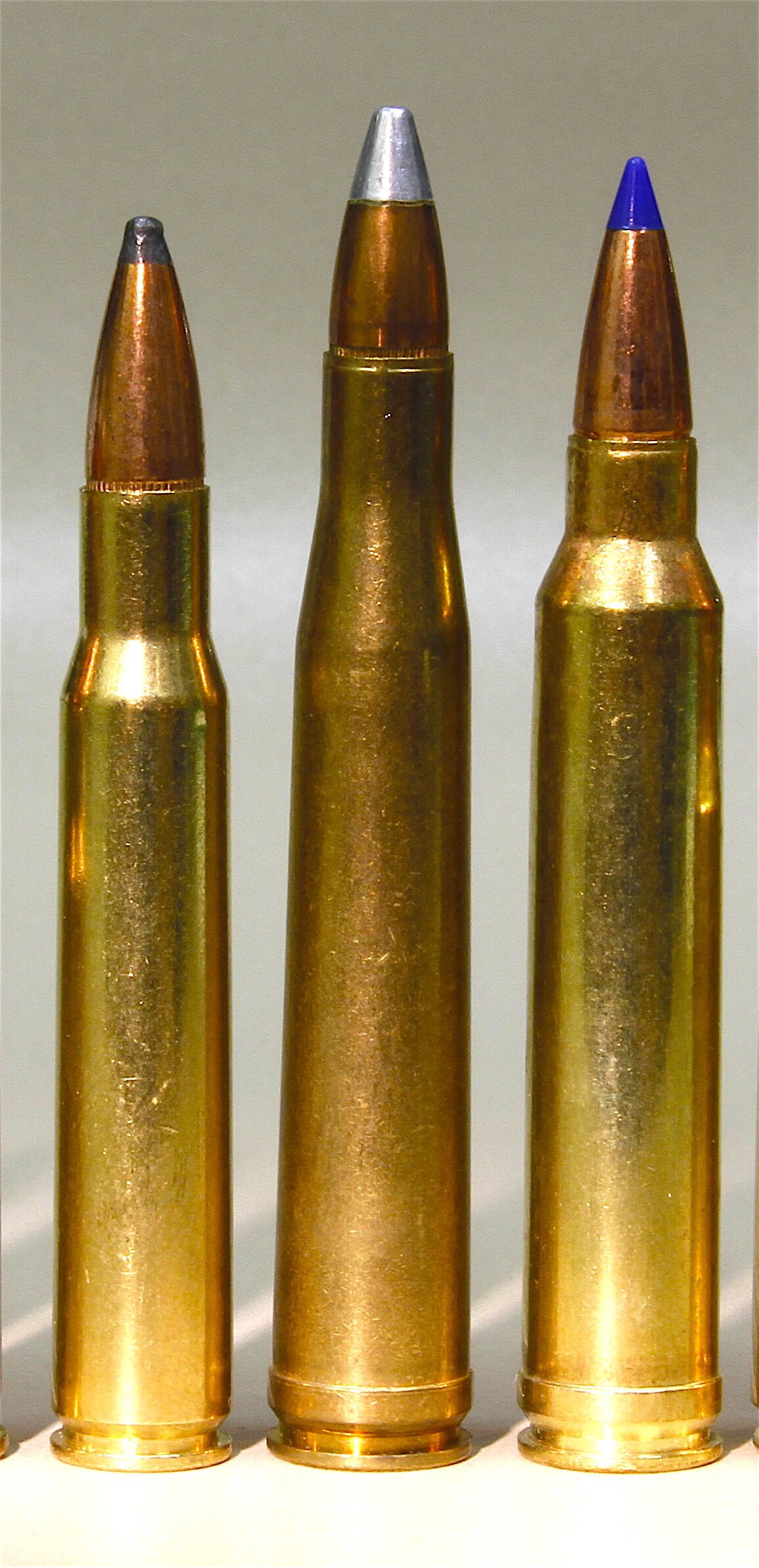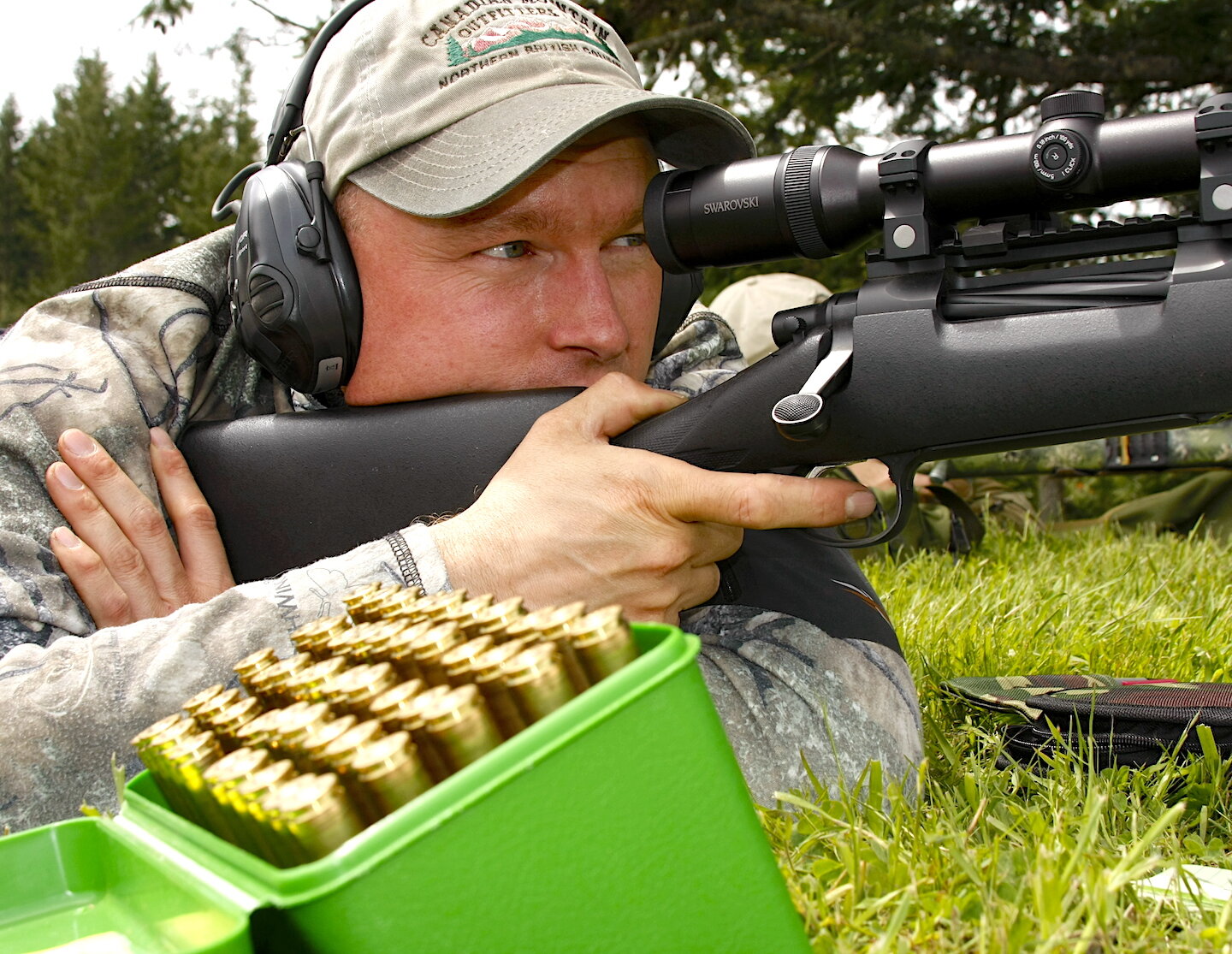Antiquated 30-06 Springfield Improved!
A reader recently asked if I think “it is possible to improve the 30-06, you know bring it into the modern day.”Great question, and it’s already been answered. Multiple times. In many ways.
Alterations to 30-06 case make it faster, more powerful
Alterations to bullet diameter make it shoot flatter or hit harder
New powders, bullet materials, construction, and shapes make handloads of the antiquated 30-06 Springfield shoot 200 to 300 fps faster than the original and nearly as fast and hard as some old magnums
Image shows a stack of antiquated 30-06 Springfield ammunition boxes with snake.
Mid-Century Improvements to the Antiquated 30-06 Springfield
In the mid-20th century a Colorado gunsmith concocted an improved version of the 30-06 that to this day bears his name. Mr. P.O. Ackley took most of the taper out of the 30-06 case (commonly referred to as “straightening the case”) and pushed its gently sloping shoulder angle to a radical 40-degrees. That increased the case’s powder capacity about 5 percent, making room for enough extra fuel to push a 180-grain bullet nearly to the same muzzle velocity as the best known, factory loaded magnum of the day, the 300 H&H Magnum.
In order to fit the 30-06 Ackley Improved into a standard 30-06 chamber, one must ream that chamber to the new dimensions of the Improved case. The beautiful thing about this and similar Ackley Improved cartridges is that the head-spacing datum line — the shoulder/neck junction — remains the same as the original. If the gunsmith reams the new chamber properly, factory 30-06 cartridges can be fired in it with perfect headspace, function, and safety. The additional chamber volume results in slightly less velocity, but the cases expand to fit. They can subsequently be hand-loaded to reach the new, top-end velocity potential.
Image shows fingers grabbing a Hornady bullet from a box atop a target beside a row of empty brass cases used in handloading antiquated 30-06 Springfield.
A slightly less well known improved 30-06 is the 30 Gibbs. This one is even faster, but a bit more difficult to make because the shoulder is pushed forward almost 0.2 inch. The result is a shorter neck than the original case, a 35-degree shoulder, and about 9% more powder capacity. This Gibbs reportedly does match or even exceed the velocity of 300 H&H factory loads, roughly 3,125 fps pushing a 180-grain bullet through a 28-inch barrel. Through a 24-inch barrel 2,940 fps is a more reasonable top speed.
The somewhat complicated manipulations involved in making an improved 30-06 case and rifle suggest hunters could simplify things by just buying a rifle already chambered for the 300 H&H. Ah, but said rifle would, by necessity of that cartridge’s full magnum length (3.6-inches) require a larger, heavier, and more expensive magnum-length rifle. This is why Winchester “improved” the 300 H&H by shortening it to the 30-06 Cartridge Overall Length of 3.34-inches while also straightening its walls and sharpening its shoulder. The subsequent 300 Winchester Magnum of 1963 , available in standard-length American rifle actions, quickly pushed the 300 H&H off the stage. That brand of good old Yankee ingenuity, creative spirit, and individual initiative have powered most cartridge evolution here.
Image shows an antiquated 30-06 beside a 300 H&H magnum and 300 Win. Mag.
Narrower Improvements to the Antiquated 30-06 Springfield
The second way the 30-06 has been improved brings us right to the doorstep of the 270 Winchester. Most of us might imagine this a cartridge in its own right, and of course it is, but we can also consider it the 30-06 “improved.” (If you can improve a cartridge by changing its body taper and length, why not its bullet diameter?) A .277-inch bullet of the same basic shape and length as a .308-inch bullet will be considerably lighter. Propelled by the same quantity of powder, it will then fly faster, flattening trajectory and minimizing wind deflection. Because it conserves velocity, it retains more energy downrange, too. Voila, the 30-06 has been improved to a flatter shooting, longer range cartridge.
The .277 version of the 30-06 was such a successful improvement in 1925 that additional improvements were made. Most of them, like the 6mm-06, lived secluded lives as wildcats, but some became successful factory cartridges. A couple that add more terminal energy to the 30-06 are the 338-06 and 35 Whelen. Two more heavy hitters that never reached factory status are the 375-06 and 400-06 (also known as 400 Whelen.) The latter practically makes the 30-06 case a straight-walled affair.
Photo shows a line up of cartridges in the antiquated 30-06 Springfield family
Noting the success of the 27-caliber 30-06, Remington created a 7mm version appropriately labeled the 280 Remington. (For a short time Remington re-named this the 7mm Express, but too many shooters confused it with the 7mm Remington Magnum, so the old 280 title was re-instated.) This one actually beats the performance of the 270 Winchester in most categories. (More on that in an upcoming RSO blog.) As if the 280 Remington wasn’t a sufficient improvement of the 30-06, it was subsequently improved itself to become the 280 Ackley Improved, a design so effective and popular as a wildcat that Nosler legitimized it as a factory round several years ago. Many rifle manufacturers, including Kimber, are chambering bolt-actions for it.
A better-known if not better performing improved 30-06 is the 25-06 Remington. This one existed as the 25 Niedner wildcat from 1920 until Remington gave it a new name and an official stamp of approval in 1969, so it is actually five years older than the 270 Winchester. If increased muzzle velocity is your idea of an improved 30-06, the .257-inch version is your baby. It’ll yield 3,600 fps with an 85-grain Ballistic Tip, 3,150 fps with a 120-grain Partition. Pronghorns and mule deer beware.
Image shows 25-06 Remingon cartridge with various bullets for it. Fastst vrsion of the antiquated 30-06 Springfield.
Powdering the Antiquated 30-06 Springfield From Behind to Get Ahead
The third and most convenient way the 30-06 Springfield has been improved is with modern powders and bullets. This is probably the direction our reader wanted us to go when he posed the “improved 30-06” question. No need to buy a new rifle. No need to re-barrel an old 30-06 action. No need to even re-chamber an existing one. Just stuff in the new, improved ammunition and enjoy enhanced performance. The original 150-grain spitzer military round was rated 2,700 fps. With the latest smokeless gunpowders, most of today’s factory ammo pushes 150-grain 30-06 projectiles 2,900 fps, sometimes 3,000 fps. Heavier 180-grain bullets step out 2,700 to 2,800 fps. Similar velocity increases are seen across the board with various bullet weights. Handloaders claim they can safely add 50 to 100 fps to those speeds, but we’re not advocating that. Stick to the data in handloading guides and leave the hot rodding to Three Fingers Finnegan.
Because doubling a projectile’s velocity quadruples its kinetic energy, increased velocity from new powders is a big improvement, but bullet design and terminal performance are what really bring the old 30-06 into the 21st century. From the old cup-and-core, flat-based, exposed lead-tip bullets of the mid 20th century we have evolved to bonded, partitioned, monolithic, and polymer-tipped missiles with extremely long, tapering noses and long, tapering boat tails that resist drag and extend range and terminal energies significantly. Combine increased terminal velocities with deep penetrating, controlled expansion bullets and low-drag, high B.C. bullets make the already deadly 30-06 even more effective.
Image shows several .308" diameter bullets that help make the antiquated 30-06 Springfield an improved cartridge.
At a launch speed of 2,900 fps a traditional, flat-base, 150-grain spire point (B.C. 338 and zeroed for 250 yards) will, at 400 yards, drop 19 inches, deflect 17 inches in a 10 mph cross wind, and retain just 1,207 f-p energy. A 155-grain VLD bullet (B.C. 439) at 2,875 fps and the same zero range will drop 16.9 inches, deflect 12.8 inches, and retain 1,505 f-p energy at 400 yards. Not a huge difference, but certainly a 30-06 improved. What can't be measured by ballistic tables is the impact today's premium bullets have on game. Terminal bullet performance plays a major role in improving the antiquated 30-06 Springfield.
Even better, in this author’s humble opinion, are high B.C., 165- to 175-grain bullets, just about the optimum weight for the 30-06’s powder charge. Properly and safely loaded in a 24” barrel, a Nosler 168-grain AccuBond Long Range bullet (B.C. .525) should launch at 2,950 fps. Zero it at 270 yards in a 10 mph right angle breeze and at 400 yards it will drop just 12.7 inches, deflect 9 inches, and still be packing 2,044 f-p energy. Unless my ballistic calculators are deceiving me, those numbers represent 6-inches less drop, 8 inches less wind deflection, and an 800 f-p increase in energy over the old 150-grain spire point!
I don’t know, folks, but all those numbers are looking like a significant improvement of great Grandpa’s doddering, ready-to-be-put-to-pasture, antiquated 30-06 Springfield. And that’s good enough for this grandpa.
# # #




















